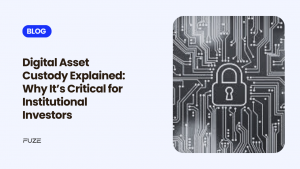The financial services industry (BFSI) is undergoing a seismic shift driven by the disruptive power of blockchain technology. This innovative ledger system is transforming the way transactions are conducted, offering faster, more secure, and more transparent solutions than traditional methods.
From streamlining cross-border payments to revolutionizing supply chain finance, blockchain is not just reshaping but also promising a more efficient BFSI landscape. In this blog, we’ll explore the exciting possibilities that blockchain presents for the industry, instilling a sense of optimism about the future of finance.
1. Streamlining cross-border payments
Payments are a fundamental aspect of banking and finance. Recently, banks worldwide have started using blockchain technology to process payments and even create digital currencies. This shift includes cross-border payments traditionally dominated by services like Swift and Western Union.
Pros: Blockchain technology makes cross-border payments quicker and cheaper than traditional systems. For instance, blockchain transactions typically cost 2-3% of the total, while conventional methods can take 5-20% in fees. Additionally, blockchain doesn’t require third-party approval, which speeds up the process significantly. A real-world example is JPMorgan’s use of its JPM Coin for instant cross-border transactions, drastically reducing the time and cost compared to traditional banking methods.
Cons: It’s important to note that some risks are associated with using cryptocurrencies for cross-border payments. If a service provider handling your cryptocurrency transactions experiences a security breach or goes bankrupt, you could lose your funds without recourse, as there’s no central authority like a bank to provide reimbursement. Additionally, converting cryptocurrencies into local currency can be problematic due to fluctuating exchange rates. For instance, in 2023, when the European Central Bank was investigating launching a digital euro project, surveys showed that users were worried about trust and security issues while using the digital currency. This cautionary information is crucial for a well-informed approach to blockchain in finance.
Examples: Banks like HSBC and Standard Chartered have been exploring blockchain for faster, more efficient cross-border payments. HSBC partnered with blockchain startup R3 to make the world’s first trade finance deal using blockchain in 2018. Standard Chartered Bank, too, has aimed to enhance cross-border payment efficiency by partnering with blockchain payment gateway Ripple.
2. Simplifying stock trading
Trading stocks and shares have always involved multiple steps and intermediaries, such as brokers and stock exchanges. Here’s a simplified rundown of how a traditional trade works:
- The buyer or seller initiates the trade.
- A broker sends the transaction to a stock exchange.
- The stock exchange matches the transaction with a counterparty.
- The trade is sent to a Central Counterparty Clearing House to assess risks.
- The buyer and seller representatives work with a Central Securities Depository (CSD) to record the transfer.
- The Registrar or Transfer Agent updates their shareholder records.
As you can see, this traditional process involves several stages and can take up to three days. Blockchain technology, with its decentralized nature, can streamline this by eliminating many of these intermediaries. This means trades could be processed more efficiently using computers around the world without the need for a complex network of servers.
Pros: Blockchain can simplify trading by reducing unnecessary steps and improving efficiency. For instance, blockchain can handle small transactions quickly and only record the final transactions on the blockchain, cutting down on redundant data handling. This potential for simplification offers hope for the future of stock exchange and share trading.
Cons: There are some risks with blockchain trading, such as the potential loss or theft of “private keys,” which are crucial for verifying ownership. Hackers who gain access to these keys could alter ownership records. However, multi-signature transactions, which require multiple parties to authorize a transaction, can help mitigate these risks and protect against unauthorized changes.
Examples: In 2015, Nasdaq explored using blockchain for their Private Market Platform. They aimed to use a concept called ‘coloured coins’ (based on Bitcoin 2.0 protocol) to differentiate between various types of coins used in trading. Additionally, Nasdaq partnered with Citigroup in 2017 to invest in Chain – a blockchain ledger designed to create a shared, real-time database of transactions and ownership changes. This would help all parties involved in a trade to see the same information at the same time, reducing the risk of disputes and fraud.
3. Creating syndicated lending opportunities
Syndicated lending involves a group of lenders, usually banks, coming together to provide a large loan to a borrower. This process can be quite lengthy due to the multiple parties involved. Traditionally, it can take up to 19 days to process a syndicated loan because of several challenges:
- Know Your Customer (KYC): Verifying the borrower’s identity.
- Bank Secrecy Act (BSA) and Anti-Money Laundering (AML): Legal requirements aimed at preventing and detecting money laundering.
Blockchain technology can significantly speed up and improve this process by making it more transparent. With a decentralized ledger, all banks involved in the syndicate can more efficiently handle compliance tasks, KYC, and BSA/AML requirements, all linked to a single customer record.
Pros: Using blockchain for syndicated loans offers several advantages. For instance, if one bank in the syndicate completes the KYC or compliance checks, other banks don’t need to repeat these steps. This shared approach not only reduces costs but also speeds up the process. For example, in 2019, Standard Chartered used blockchain to streamline syndicated lending for a significant borrower, cutting down the processing time and improving transparency among the participating banks.
Cons: However, blockchain isn’t a cure-all for syndicated lending issues. Implementing blockchain requires all participating banks to adopt the technology, which can be complex. Despite this, many banks are forming blockchain syndicates to overcome these challenges. For instance, in 2020, a group of banks, including ING and Société Générale, collaborated on a blockchain-based syndicated loan platform to simplify and expedite the process.
4. Generating immutable transaction records
One of the standout features of blockchain technology is its ability to provide nearly tamper-proof transaction records. This is a big deal for maintaining data integrity, which is increasingly essential in today’s financial world. Since the Great Recession of 2008, many people have grown sceptical of traditional banks and fiat currencies.
Even central banking systems are resistant to this scrutiny. Governments have started implementing regulations for cryptocurrency exchanges, and the public and some officials still have a fair amount of distrust toward the crypto industry.
Blockchain technology offers a way to rebuild trust in traditional and modern banking systems. Blockchain uses a distributed and public financial database, holding all participants accountable. For example, the European Union’s GDPR has prompted organizations to look into blockchain for secure and transparent data handling, which can help restore public confidence in data integrity.
Example: In 2020, Deloitte and Aigle Azur used blockchain to verify the authenticity of records in the aviation industry. This approach demonstrated how blockchain could enhance transparency and trust in crypto and across various sectors.
5. Helping hedge fund investors
A hedge fund is essentially an investment partnership in which a fund manager works with a group of investors known as limited partners. Unlike ordinary investors, the participants in a hedge fund are typically more experienced traders. The goal of a hedge fund is to achieve high returns for investors while minimizing risks.
Interestingly, according to Autonomous NEXT, the number of hedge funds trading in cryptocurrencies surged, doubling from October 2017 to February 2018 (Source). It’s important to note the difference between traditional hedge funds dealing with crypto and decentralized ones.
Pros: Decentralized crypto hedge funds offer a more open platform, allowing a broader range of crypto investors and strategists to get involved. This contrasts with traditional crypto hedge funds, which a single entity or fund manager manages. Forbes highlights that this openness can democratize access to crypto investments and strategies.
Cons: However, there are risks involved. For instance, some individual investors worry about the potential dangers of short-sellers borrowing crypto coins, which can increase volatility and risk.
Examples: Some well-known decentralized crypto hedge funds include Alphabit Fund, Blocktower Capital, CoinShares, and Crypto Asset Fund. These funds have become notable for their innovative crypto-investing approaches and expanding access for more investors.
Conclusion
Blockchain technology is rapidly redefining the landscape of banking and financial services, bringing unprecedented levels of efficiency, transparency, and security to the industry. From streamlining cross-border payments to simplifying stock trading, creating syndicated lending opportunities, generating immutable transaction records, and transforming hedge fund investments, blockchain’s impact is both profound and far-reaching.
At Fuze, we are committed to harnessing the transformative potential of blockchain to empower financial institutions, banks, and high-net-worth individuals. Our innovative infrastructure solutions provide secure and efficient digital asset transactions while ensuring compliance with regulatory standards. As blockchain adoption accelerates, Fuze stands ready to help our clients seamlessly navigate this evolving landscape, leveraging cutting-edge technology to drive innovation and success in 2024 and beyond.
Explore how Fuze can support your digital asset and blockchain initiatives at https://fuze.finance/.







